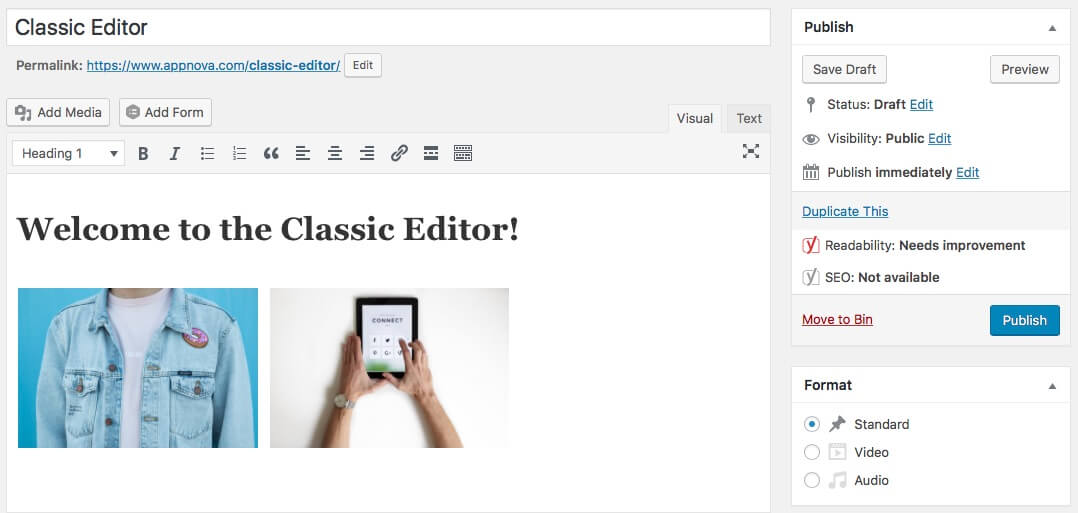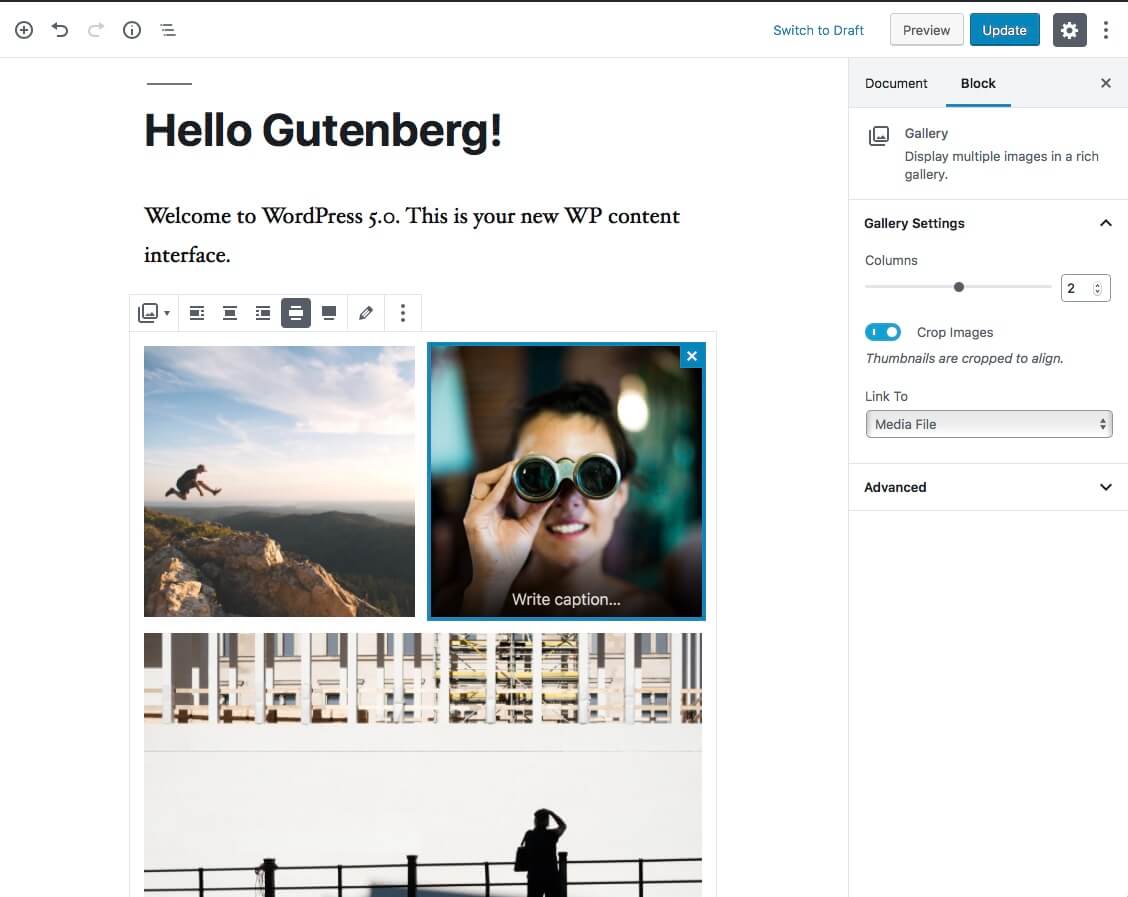Should I update my site to WordPress 5.0: Key consideration before updating
It has been a month since the newest WordPress 5.0 “Bebo” has been released, yet it is said to be more stable from January, with its multiple patch releases. The modernization of a theme and a new block-based editor create exciting new opportunities for both users and developers, which are protection, composition and creation. WordPress is used by 59% of all the websites with a known content management system, which means 32% of all websites on the Internet. If your platform is one of them, then read along!
It has always been suggested to update WordPress with its latest version but having your site unprepared for such change may cause several issues. What steps should you take to avoid problems? To help you with a smooth update we prepared a detailed list of things to know before updating to WordPress 5.0.
What should you know before updating: Important changes of WordPress 5.0
The Gutenberg editor
WordPress introduced a new interface for adding and editing content, which is a block-based editor, giving a user a streamlined and flexible editing experience throughout the site. You can upload any type of multimedia in a snap and easily rearrange it. What is more, the interface doesn’t change the way any of your content looks to your visitor, it only affects website’s building space, which means you can experiment as much as you need. Blocks are a comfortable way of manipulating content directly, without worrying about disruption by accidental code edits. The output cannot be easily broken!
However, new Gutenberg editor is incompatible with most of the third-party plugins and themes available on the market- some of them are bespoke, created as a single project and maintained by their authors, which means they haven’t been tested in WordPress 5.0. On that note, you have 2 routes to follow:
i) Disabling the Gutenberg editor – to make your site compatible with WordPress 5.0 without adapting the theme, you may need to disable Gutenberg and install the Classic editor. A way to do it is using this plugin: Disable Gutenberg.
ii) Adapting your theme to the new editor – you can contact your developer and request changes in order to make your theme work with WordPress 5.0.
Here are the visual examples of a content editor, before and now:
 Before – Classic Editor
Before – Classic Editor
.
.
.

Now – Block Based Editor
All of the enhancements and features for developers such as additions to the REST API are available on the WordPress site.
What are the requirements?
WordPress 5.0 has new requirements that can make your server incompatible with the new version. Before updating you need to make sure that your server meets the following requirements:
1. PHP requirement: PHP is the scripting language that powers WordPress as well as its themes and plugins. Many WordPress and PHP websites remain on version 5.6 or older. In 2 months, version 5 of PHP will reach end of life and so will its support. For security reasons you need to make sure your PHP is upgraded to the latest version (PHP 7.2+) in order to be compatible.
2. Database management system requirement: WordPress server requirement for Version 3.2+ is MySQL version 5.0.15 or any version of MariaDB. What changes in WordPress 5.0? It requires MySQL 5.6+ or MariaDB 10.0+. Be aware, that having an old version of MySQL such as 5.0+ may expose your site to security vulnerabilities, because this version has reached official End Of Life. On that note, having an older version of the database management system, you won’t be able to upgrade to the new WordPress 5.0.
3. Plugins compatibility: With over 60,000 unique plugins in the WordPress plugin directory, it is not feasible to test all of the plugins in the new editor. For instance, some important plugins as Advanced Custom Fields, which has more than 1 million active installations are not certified as 5.0.3 compatible yet. Before updating your site you need to make sure that all your plugins work with Gutenberg and double-check it through testing in staging environment.
4. Theme compatibility: In order to work perfectly fine, Gutenberg editor needs a compatible theme. The new Twenty Nineteen theme is an example of good compatibility, and you can see it on the standard installation of WordPress 5.0. If you have had a bespoke theme developed, it will definitely need a significant redevelopment. Posts and page contents with manually added classes or styles could be incorrectly converted into the Gutenberg syntax and your site would break.
5. Custom plugins: Any custom scripts and plugins related to the backend UI will have to be redesigned, as 99% of the time they are not based on the WordPress development guidelines. Before updating, contact the developer who could audit the plugin and find out whether you are good to go or need any work done beforehand.
It is crucial to safely prepare your site for such a big change in order to avoid any issues and disappointment. To make sure the migration goes smoothly, remember to:
a. Backup your entire site
Avoid taking the risk and breaking or losing your site, as there is always a chance that something goes wrong during the update. Backup the database and all of the files prior to the update, just in case you need to go back to the previous version and restore your website. Store the backup file safely in a secure, remote destination (not on your server).
b. Run a test
It is worth to stage the site, which means creating a copy and making changes on the copy first. You can then preview your site and see if it fully handles the new update. You can try out the Gutenberg editor without affecting your live site, as long as you run through a testing environment. It can help you decide whether to use it or stay with a Classic one. It is also very important to ensure your theme is compatible with Gutenberg, so install your current theme and test it first.
Should I update to WordPress 5.0 or not?
Although you may be ready to migrate smoothly, it would be good to hold back for a while and check plugin compatibility- many plugins still do not have support for Gutenberg and are not 100% compatible. If there is no compelling reason for you to update- wait. 5.0.2 Release fixed 73 bugs present in 5.0.1 version that has been released to fix some security vulnerabilities, many more will be discovered in the near future. WordPress 5.0 will be more stable soon, for instance version 5.0.3 already contains 37 bug fixes and 7 performance improvements for the block editor.
However, if this is not one of your concerns and you feel that you want to try out the new product, go ahead, but remember about the key things before updating to WordPress 5.0:
- Backup your site.
- Try it out in a testing environment (a fully functional copy of your site).
- Make sure your PHP version is compatible with WordPress 5.0.
- Make sure your MySQL or MariaDB version are compatible with WordPress 5.0.
- Check if all your plugins are compatible with WordPress 5.0.
- Decide whether you want to make your theme compatible with Gutenberg or disable it and use the Classic Editor instead.
Are you excited that the new block-based editor now allows more custom content design than it has ever before?! Share your thoughts in the comments section below!
If you require any help with updating to WordPress 5.0, we’re here to help! Please contact us.
Subscribe To Us
Our Services
Categories
Subscribe To Us
Contributors
Categories

This website uses cookies so that we can provide you with the best user experience possible. Cookie information is stored in your browser and performs functions such as recognising you when you return to our website and helping our team to understand which sections of the website you find most interesting and useful. Third party cookies such as Google Analytics is also used on this site to provide analytics in order to better understand the user engagement on our site.
You can adjust all of your cookie settings by navigating the tabs on the left hand side.
Strictly Necessary Cookie should be enabled at all times so that we can save your preferences for cookie settings.
If you disable this cookie, we will not be able to save your preferences. This means that every time you visit this website you will need to enable or disable cookies again.







0.Comments